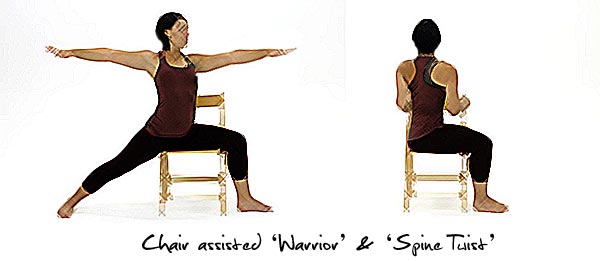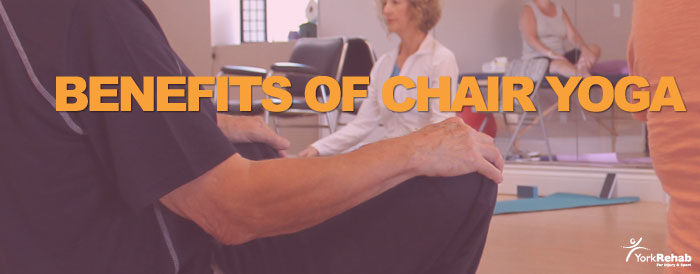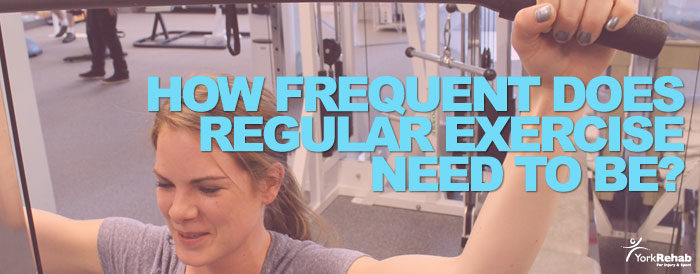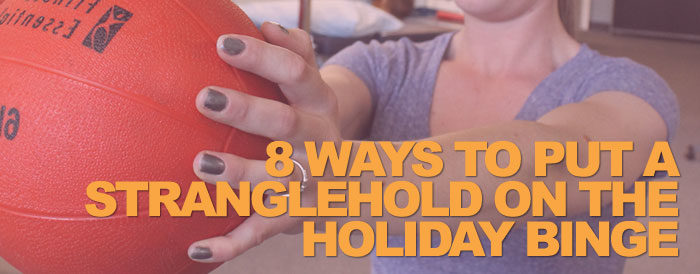Fitness & Excercise
Hidden Calories in Holiday Drinks
People concerned about calories often try to limit the intake of sweets over the holidays but may overlook another significant source of calories… alcoholic drinks! The number of calories in mixed drinks can add up quickly and could easily contribute to an expanding waistline during the holidays.
Indulging in an alcoholic beverage doesn’t have to derail your fitness efforts if you keep calories low and make wise choices. Learn how many calories are in four popular drinks and some options to reduce their calories:
Piña Colada
This tropical island treat is made with light rum, coconut milk, and pineapple juice. While the tropical taste may help ward off the winter blahs, you may end up singing the blues once you learn a 12-ounce drink has about 590 calories.
Lighter Option: Mix 1-ounce coconut rum with 4-ounces of pineapple juice over ice, top with club soda. By skipping the high fat and high-calorie coconut milk, you can reduce the calories by 75%.
Mudslide
Flavours of chocolate and coffee come together in this drink made with coffee-flavored liqueur, Irish cream, vodka, chocolate syrup and half-and-half cream. Due to the rich and creamy ingredients, a 6-ounce drink comes in at 560 calories.
Lighter Option: Skip the high-fat cream, ditch the chocolate syrup and Irish cream in favour of coffee liqueur, chocolate vodka mixed with low-fat milk.
Brandied Eggnog
For some, there is nothing more festive than sipping on spiked eggnog at a holiday gathering. The list of ingredients may be short – brandy combined with store bought eggnog – but the calorie count is high at over 400 calories per cup.
Lighter Option: Mix low-fat eggnog with cinnamon flavoured vodka to enjoy all the festive flavour and creaminess but for about half the calories.
Cosmopolitan
This classic martini is a staple on many drink lists thanks to Sex in the City. Made from vodka, orange liqueur, cranberry juice and lime, a 4-ounce drink has about 220 calories.
Lighter Option: Combine raspberry infused vodka, with a splash of cranberry and a squeeze of lime to save yourself a hundred calories.
Didn’t find your drink on the above list? Consider these other calorie saving suggestions:
- Drink liquor neat or on the rocks because it has fewer calories than a mixed drink
- Stick to clear liquors instead of creamy ones
- Ask for mixed drinks to be made with diet tonic or sodas, soda water or just a splash of juice
- Drink a light beer which has about 110 calories per 12-ounce bottle
- Toast the holidays with a glass of dry champagne which has about a 100 calories per 4-ounce glass
- Savour a glass of chardonnay or cabernet sauvignon which has about 125 calories per 4-ounce glass
- Alternate alcoholic drinks with sparkling water and lime – not only will this will keep you hydrated, it will also reduce how much you drink (in some cases by as much as half)!
Remember drinking these lower calorie options should still be done in moderation and paying attention to the portion size. Also please be responsible – don’t drink and drive. Happy Holidays from our Newmarket physiotherapy family to yours!
Add These 6 Things to Your Christmas Wish List
Christmas is just around the corner and between holiday parties and family functions, your fitness and healthy living choices may take a back seat to all the “excess”. Plus all of the social demands on your time can make sticking to a regular fitness routine difficult. But by asking Santa for the right gifts, you may be able to keep your fitness goals on track this holiday season.
Here is a cheat sheet of some inexpensive, yet effective fitness gifts to put on your wish list:
Yoga mat and yoga block
Some of the benefits of practicing yoga include increased flexibility, reduced stress, improved sleep and boosted immunity. While you don’t need to practice yoga in a fancy studio to reap these benefits, you do need a yoga mat. A yoga mat cushions your hands and feet and provides a non-stick practice surface. A must for any aspiring yogi!
If you think yoga poses are beyond your range of flexibility or strength, consider asking for a yoga block. Yoga blocks are brick shaped props made of cork, wood or hard foam that raise the floor to your hands of feet; therefore, helping make yoga poses easier and safer for beginners with limited flexibility or those experiencing reduced mobility.
Activity Tracker App
Downloading an activity tracker app, such as The Walk: Fitness Tracker Game or Zombies, Run! could be the inspiration you need to stay active. These apps immerse you in a story and provide you with a mission, which is finished by completing a specific distance or duration of activity. If you are not interested in participating in the story on a daily basis, the apps can also track your step count and distance covered.
IceTraxx
Wish you could keep walking, hiking and running outdoors this winter? But are worried about the possibility of slipping on icy sidewalks or trails? Then consider asking for a pair of IceTraxx to help increase traction and help prevent slips or falls on snow and ice. IceTraxx fit easily on most styles of boots or shoes without snaps, straps or buckles and will allow you to continue training outdoors this winter. These are available at our Newmarket physiotherapy clinic and affordably priced at $10.00 per pair.
TRX
It is pretty common to see a contraption with yellow and black straps hanging from the ceiling of your gym, but you may not be sure what it is. The TRX Suspension Trainer relies on gravity and your body-weight to provide a total body workout. With just one training tool you can complete a variety of exercises that will increase your heart rate and build strength. TRX is compact, lightweight and when used with a specialized door attachment can be used while traveling or at home.
A workout buddy
Include a “I need a fitness buddy” on your wish list this year. It would be wonderful if you were gifted a like-minded friend or family member to join you on your fitness journey towards pursuing a healthier lifestyle together. You could agree to meet at the gym a couple of nights a week, play squash together on the weekends, swim laps at the local community center before work, go for walks on your lunch break, sign up to take a kickboxing class together – the list of options is endless! No matter what you choose, exercising with someone else is a sure-fire way to stay motivated and committed to workout.
Workout attire
Now that you have exercise equipment and a workout partner, you need clothes to wear. From sports bras to shorts, to funny T-shirts to yoga pants, there are tons of clothing options to help you feel good during your workout. Plus having stylish workout gear may help get you in the mood to exercise and can help boost your confidence.
So there you have it, 6 Christmas gift ideas to help keep your fitness goals on track this holiday season and well into the New Year. If you’re looking for a fitness class, our Newmarket physiotherapy clinic offers different exercise classes in our Fitness Studio.
Benefits of Chair Yoga
Yoga can be intimidating because there’s a misguided notion that you need an advanced level of strength and flexibility. And although possessing an advanced level of each will make a yoga session easier, a great workout is always achieved because yoga pushes your own limits no matter what your capability. Our Newmarket physiotherapy clinic has a Fitness Studio where we’ve been hosting yoga classes for several years. We think yoga is wonderful for your health, wellness, recovery and spirit. Yoga really is magical. From time to time we host a Chair Yoga session in order to encourage people to come out and experience Yoga – we feel if you try it once, you’ll be hooked.
So why the chair? Here are some benefits of Chair Yoga:
Balance & Support. We want to reduce the intimidation factor in order to get someone to come and experience yoga first hand. The chair adds an element to a person’s confidence knowing that it can be used as a prop to aid with balance and support. Poses that require a one-legged stance are much easier when you have something to hold on to and it allows you to develop competency in the particular position until you are comfortable enough to let go.
Building Strength & Stamina. Many are fooled into thinking that yoga is easy, it’s just a bunch of easy poses while you are sitting or lying down. And while sitting and lying are definitely part of the practice, the deliberate and controlled movement that is required from each pose will often engage muscles not normally used making yoga a great workout. This results in developing greater strength, stamina, flexibility, and balance. And this happens regardless of how good you are at yoga – as long as you challenge YOUR limits you will experience results.

A chair to assist with something like a “spine twist” or a “warrior pose” can safely get you into slightly more challenging poses sooner allowing you to reap the rewards quicker.
Get into Activity Sooner. When recovering from an injury, especially if the injured area is in your lower body, mobility (and confidence) may be limited. A chair provides the support that allows you to begin introducing exercise/activity back into your life. The opportunity to sit while engaging in activity can reduce any discomfort you might feel while standing if you are recovering from an injury.
If you’d like to know when the Fitness Studio at our Newmarket physiotherapy clinic will hold its next chair yoga session give us a call – 289.796.1155.
How Frequent does “Regular Exercise” Need to be
Most people don’t have endless amounts of time to spend in the gym every week. So it is a good thing regular exercise means only spending a minimum of 150 minutes a week doing cardiovascular/aerobic activity along with strength training. You can break that into 30-minute segments done five times a week or 40-minute sessions done 4 times a week.
Your exercise routine should include cardio, lifting weights and stretching, which can be combined or divided into separate sessions. But how much of each should you be doing? Here’s a suggested breakdown:
Cardio Exercise
Doing cardio burns calories and can help you achieve a weight-loss goal. It also keeps your circulatory system working optimally and builds your endurance.
How Often:
Aim to do cardio a minimum of 2 times per week for 30-45 minutes per session.
How to Do It:
The key to cardio is getting your heart beat up and breaking a sweat. Walking can be great but if you are not sweating, you need to pick up your pace. Aerobics, cycling, rollerblading, jogging or swimming are some great options that are sure to get your heart rate up.
Looking for something less mundane than walking or running? Here are some options that will have you sweating in no time (link to Zero Running Weight Loss Exercises).
Weight Training
The more muscle you have, the higher your metabolic rate (or calorie burning ability) will be. Lifting weights also help strengthen joints and bones.
How Often:
Aim to do weights 3 times per week for 30-45 minutes per session. Ideally, you should not do weight training on consecutive days. A recovery day or two allows your muscles to heal and rebuild themselves.
What to Do:
Include upper and lower body exercises to cover all major muscle groups. Be sure to lift weights that are heavy enough to tire the muscles – safe technique is key so consult a trainer or physiotherapist. Incorporate bodyweight moves (e.g. push ups, dips, chin ups, etc.) to challenge your body and increase the calorie burn.
Need some ideas on an exercise routine? Here are 6 great exercises you may have forgotten about.
Don’t Forget to Stretch!
Most people forget about stretching, but it is an important part of your exercise program.
How Often:
At least 2 to 3 times a week ideally after a workout.
How to Do It:
Stretch all major muscle groups after each workout, focusing on the body areas that you just finished exercising. Hold your stretches until the feeling of resistance, then breathe for at least a count of ten before releasing. If you experience pain during a stretch, do not continue that movement – if the pain persists consult a health professional to ensure you’re not injuring yourself. Want to know why you should stretch? Here are 4 reasons (link to stretching article).
Scheduled physical activity that helps you reach the recommended 150 minutes of exercise a week can be considered regular exercise. If you’re already active, use the measure of sweating and slight muscle soreness as a marker that your intensity level qualifies as exercise. The more regular you are with exercise the easier it becomes so continue to increase your cardio intensity and move towards lifting heavier weights to challenge your muscles, so you can continue to reap the benefits of regular exercise.
Just starting out? Take it slow with three sessions of 20 minutes each week and build up from there. Never exercised before or are unsure of how to get started? You can make an appointment to see one of our physiotherapists who can help you start exercising regularly – we also offer fitness classes for beginners.
8 Ways to Stranglehold the Holiday Binge
Thanksgiving is a wonderful holiday. It means spending time with family, reconnecting with loved ones, remembering the blessings in life that we’ve been gifted, and eating – lots and lots of eating for the occasion and continuing onwards for the next 3 months. Thanksgiving is like the kick-off to the holiday season socializing bonanza that ends in the New Year – that unrelenting stretch of party after party with seemingly unlimited access to food and drink. The bloated social calendar means lots of alcohol, finger foods, big meals and desserts which add up to a thicker waistline, a plumper rear-end and inevitably tighter fitting clothes. These harsh realities often mean stepping up a size or two on your next shopping excursion or remain in denial and battle with the bulges and tight-fit discomfort. Although the risk of that extra 5 to 10lbs is coming, and possibly tacked on to the gains you never managed to shed from last year’s stretch, there IS something you can do to avoid the gains. Here are 8 ways to plan ahead to counter the bingeing.
1. Serve Yourself from a Smaller Sized Plate. A smaller plate means less surface area to fill with all the yumminess in front of you. If you don’t have enough willpower to control your portions, the smaller real estate will provide adequate support.
2. Learn About the Number of Calories You’ll Be Around. If you know how many calories there are in some of the types of foods and snacks you’ll be offered, you may think twice about how you choose to eat. And be aware of the calories that are often overlooked – they like to hide in more than just dessert. For example, you may know that a bottle of Heineken has almost 150 calories but did you know the count for a Rum & Coke (143 cal), Cosmo (218 cal), or a Long Island Ice Tea (218 cal). Mixed drinks often come with a high caloric count because of the sugar-rich chasers so consider an “on the rocks” serving or chasing with just water (or at least dilute the sugary chaser). Also, follow up each drink with a glass of water – it will likely fill you up faster and reduce the overall amount of alcohol you throw back.
3. Dish out Greens and Veggies First! By starting to fill your plate with greens first, you leave less room for everything else.
4. Skip the Second Serving. After you eat, take your plate to the sink. If you leave it in front of you while you chat, it’s only a matter of time before someone will pass by asking if you’d like more or you may feel the need to reward yourself with seconds after enduring that long and boring story about that “whatever it is” delivered by the person sitting next to you. And although highly unlikely, if you have some lingering hunger pains, don’t worry because dessert is just around the corner.
5. Don’t Arrive Starving. It’s a proven fact that you should NOT go grocery shopping when you’re hungry because you’ll overspend. If you’re heading to a get together on an empty stomach, it’s a guaranteed recipe for over-eating. So maintain your regular eating routine before the big family dinner – have a generous lunch and even grab an afternoon snack before the “big eat”.
6. Maintain your exercise routine. Just because the holidays are here it doesn’t mean you need to take a break from exercise. If your normal routine is to exercise in the evening, change to a morning workout if your social calendar is going to be filled with after-work get-togethers.
7. Allow yourself some leeway for a missed workout or two. Just because you miss one or two workouts, it doesn’t mean it’s all falling apart and you should just give up and stop. Quickly forgive yourself for the missed session(s) and simply continue – tomorrow is always a new day.
8. Start Your New Year’s Fitness Resolution Before the Holidays. Instead of waiting until the New Year to begin your fitness goals, start in October. Beginning a new exercise routine before the “socializing stretch” is a sure fire way to acquire restraint. If you’re feeling good about yourself after losing a couple of pounds, you’ll be less likely to indulge because you’ll want to hold on to your healthy-living momentum.
If you plan ahead and fill yourself with the right information you’ll be able to manage your temptations head instead of letting them get out of hand. And remember the simplest option is always restraint; eating less isn’t a punishment, it’s a gift to you. Wouldn’t it be awesome to get exit the holiday stretch the same way you came into it. Best of luck!






